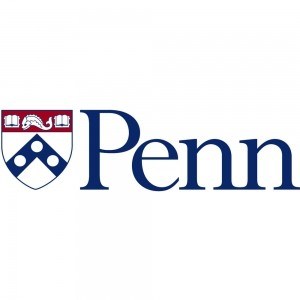Photos of university / #csuci
The Biomathematics Concentration at California State University offers students an interdisciplinary program designed to integrate principles of mathematics and biological sciences. This concentration provides students with a comprehensive understanding of complex biological systems through quantitative analysis and mathematical modeling. The curriculum emphasizes a strong foundation in core mathematics, including calculus, statistics, and linear algebra, paired with in-depth coursework in biology, genetics, ecology, and physiology. Students are encouraged to develop skills in computational methods and data analysis, preparing them for diverse careers in research, healthcare, environmental management, and biotechnology industries.
The program fosters critical thinking and problem-solving abilities by challenging students to apply mathematical techniques to real-world biological problems. Through a combination of coursework, laboratory work, and research projects, students gain practical experience in data collection, analysis, and modeling. The curriculum is designed in consultation with faculty from multiple disciplines to ensure it remains current with emerging scientific developments. Students may also have opportunities for internships and collaborative research projects with industry partners and academic researchers, giving them valuable hands-on experience and professional networking opportunities.
Graduates of the Biomathematics Concentration are well-equipped to pursue advanced degrees in biomedical research, bioinformatics, systems biology, or related fields. The program aims to develop graduates who are adept at interdisciplinary collaboration, able to communicate complex scientific concepts effectively, and competent in employing computational tools to address biological questions. Whether entering the workforce directly or continuing their education, students will be prepared to contribute innovatively to scientific advancements and technological breakthroughs in biomedical and environmental sciences. The program's flexibility allows students to tailor their coursework towards their specific interests and career goals, ensuring a personalized and enriching educational experience.
120 unitsSummary of Units:
|
||||||||||||
Lower Division Requirements - 34-35 unitsMATH 150 - Calculus I Units: 4 MATH 151 - Calculus II Units: 4 MATH 230 - Logic and Mathematical Reasoning (Cross-listed as PHIL 230) Units: 3 MATH 240 - Linear Algebra Units: 3 MATH 250 - Calculus III Units: 3 PHYS 200 - General Physics I Units: 4 Select one of the following:PHYS 201 - General Physics II Units: 4 and one additional science course Units: 3-4 or One two-semester science sequence Units: 7-8 Select one of the following:COMP 105 - Computer Programming Introduction Units: 3 COMP 150 - Object-Oriented Programming Units: 4 Select an additional Computer Science course:COMP 150 - Object-Oriented Programming Units: 4 or above or COMP 102 - Web Development Units: 3 Upper Division Requirements - 20 unitsMATH 300 - Discrete Mathematics Units: 3 MATH 331 - History of Mathematics Units: 3 MATH 350 - Differential Equations and Dynamical Systems Units: 3 MATH 351 - Real Analysis Units: 3 MATH 352 - Probability and Statistics Units: 3 MATH 451 - Complex Analysis Units: 3 MATH 499 - Senior Colloquium Units: 1 (Twice) Electives in Major - 9-13 unitsNote: Courses used for the concentrations cannot be counted as elective. Students planning on teaching math have to choose MATH 492 for field experience requirement. Other courses recommended for teaching careers are marked with T. MATH 318 - Mathematics for Secondary School Teachers Units: 3 T MATH 330 - Mathematics and Fine Arts Units: 3 T MATH 345 - Digital Image Processing (Cross-listed as COMP 345, PHYS 345) Units: 3 MATH 354 - Analysis of Algorithms Units: 3 MATH 393 - Abstract Algebra I Units: 3 T MATH 429 - Operations Research Units: 3 MATH 430 - Research Design and Data Analysis Units: 3 MATH 437 - Mathematics for Games, Simulations, and Robotics Units: 3 MATH 438 - Philosophy of Mathematics (Cross-listed as PHIL 438) Units: 3 MATH 445 - Image Analysis and Pattern Recognition (Cross-listed as PHYS 445, COMP 445)Units: 3 MATH 448 - Scientific Computing Units: 3 MATH 450 - Partial Differential Equations and Mathematical Physics Units: 3 MATH 452 - Computational Bioinformatics (Cross-listed as COMP 452) Units: 4 MATH 480 - Differential and Riemannian Geometry Units: 3 MATH 482 - Number Theory and Cryptography Units: 3 T MATH 484 - Algebraic Geometry and Coding Theory Units: 3 MATH 490 - Topics in Modern Mathematics Units: 3 MATH 492 - Internship Units: 1-3 T (Required for teachers) MATH 494 - Independent Research Units: 1-3 MATH 497 - Directed Studies Units: 3 MATH 499 - Senior Colloquium Units: 1 Concentration - 6-10 unitsBy the sophomore year, in order to plan their electives, students should decide on one of the concentrations and take all courses listed in that section. Choice of other concentrations or individualized concentrations is possible upon approval of the mathematics advisor. Biomathematics - 10 unitsStudents selecting this concentration should take BIOL 201 MATH 202 - Biostatistics (Cross-listed as PSY 202) Units: 3 MATH 430 - Research Design and Data Analysis Units: 3 MATH 452 - Computational Bioinformatics (Cross-listed as COMP 452) Units: 4 Interdisciplinary GE Course outside major - 3 unitsSelect one interdisciplinary GE Course 3 unitsRecommended: COMP 447 - Societal Issues in Computing Units: 3 COMP 449 - Human-Computer Interaction (Cross-listed as PSY 449) Units: 3 PHYS 434 - Introduction to Biomedical Imaging (Cross-listed as BIOL 434, HLTH 434) Units:4 |
To graduate, students must complete 120 units minimum (40 units must be upper division) including all General Education (GE) and Graduation Requirements . The following areas must be included:
Additional Lower Division A-E (GE) Requirements not met within the major
Nine units of Upper Division Upper Division Interdisciplinary GE (UDIGE), courses are numbered 330-349 and 430-449. Six units may be within the major, 3 units must be outside the major (C or better grade)
Multicultural Requirement (C or better grade)
Language Requirement (C or better grade)
American Institutions Requirement
Free electives as needed to meet minimum units for graduation
The Biomathematics Concentration at California State University offers various financing options to support students throughout their academic journey. Tuition fees for in-state undergraduate students typically align with the standard rates established by the university's campus. Currently, the estimated tuition for California residents is approximately $6,800 per academic year. Out-of-state students pay a higher tuition fee, which is approximately $18,700 per year. Additional fees may include campus-based health services, student activity fees, and materials or lab fees related to coursework.
Financial aid opportunities are available to qualifying students through federal and state assistance programs. The Free Application for Federal Student Aid (FAFSA) must be completed annually to determine eligibility for grants, loans, and work-study programs. The Federal Pell Grant is a primary source of need-based financial aid for eligible students, providing funds that do not require repayment. California residents may also access state-specific grants such as the Cal Grant, which can significantly reduce tuition costs depending on financial need and academic performance.
CSU also offers scholarship programs targeted specifically at undergraduate students pursuing degrees in STEM fields, including biostatistics and biomedical mathematics. These scholarships can be awarded based on merit, financial need, or a combination of both. Some scholarships are renewable annually, contingent upon maintaining a specified GPA and continuing enrollment in the program.
Apart from institutional aid, many students secure funding through private scholarships provided by foundations and professional organizations interested in advancing mathematics and health sciences. Additionally, work-study programs allow students to gain practical experience while earning income, which can help offset educational expenses.
The university encourages students to explore multiple avenues of funding early in their academic planning. Information about available financial support, application procedures, and deadlines is published on the university’s financial aid office website. Furthermore, students are advised to meet with counselors to develop comprehensive financial plans tailored to their individual circumstances. For students engaged in research or specific projects within the concentration, funding through grants or departmental assistance might be available, although specific details depend on current allocations and project requirements.
Overall, while the program offers various financial aid options, students should prepare thoroughly by researching and applying for all relevant opportunities. The goal is to make the Biomathematics Concentration accessible to talented students from diverse economic backgrounds, supporting their educational pursuits and future careers in mathematics and health sciences.
The Biomathematics Concentration at California State University offers students a comprehensive curriculum designed to integrate principles from biology and mathematics, preparing them for diverse career paths in research, healthcare, and data analysis. The program emphasizes the development of quantitative skills necessary to analyze complex biological systems, including genetics, ecology, epidemiology, and molecular biology. Students engage with courses in calculus, linear algebra, probability, statistics, and differential equations, alongside specialized classes in biological modeling and computational biology. This interdisciplinary approach aims to equip graduates with the ability to create mathematical models that simulate biological processes, interpret data, and contribute to scientific advancements.
The curriculum typically includes foundational courses in biology and mathematics, followed by advanced modules focusing on applied biostatistics, computational methods, and mathematical modeling techniques relevant to biological research. Students are encouraged to participate in research projects, internships, and collaborative activities that reinforce their practical understanding and prepare them for graduate studies or careers in biotechnology, pharmaceuticals, or academic research. The program also promotes skills in software tools and programming languages commonly used in data analysis and modeling, such as R, Python, and MATLAB.
Graduates of the Biomathematics Concentration are well-equipped to pursue advanced degrees in fields like bioinformatics, systems biology, or applied mathematics. Alternatively, they may enter the workforce in roles that demand strong analytical and quantitative skills, such as data analysts, research assistants, or technical specialists in healthcare and biotech companies. The program emphasizes critical thinking, problem-solving, and interdisciplinary collaboration, which are vital in tackling current biological and medical challenges.
California State University supports students through dedicated faculty mentors, state-of-the-art laboratories, and opportunities for conference participation and scientific publication. The concentration fosters a vibrant academic environment, encouraging innovation and active engagement with scientific communities. Overall, the program prepares students to contribute meaningfully to the advancement of biological sciences through mathematical and computational expertise, addressing some of today’s most pressing biological questions.


